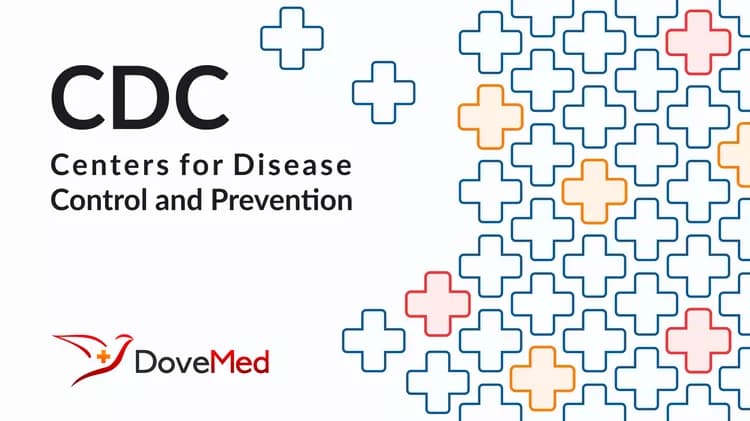
Federal report provides snapshot of state-specific data on tobacco control investments
Federal report provides snapshot of state-specific data on tobacco control investments
The Centers for Disease Control and Prevention (CDC) today issued a new report that found that 45 states made a total investment of $883.2 million in public health programs in fiscal year 2001 to decrease the prevalence of tobacco use in the United States, particularly among teenagers whose current smoking rates remain high throughout the country.
The report, Investment in Tobacco Control: State Highlights, 2001, is a tool for states to use in developing tobacco control programs. It provides current state-based information on the prevalence of tobacco use, the health impact and costs associated with tobacco use, tobacco control funding, and tobacco excise tax levels for all 50 states and the District of Columbia. It is the third State Highlights report released by CDC and the first one to provide a compilation of states' investments in tobacco control. "We are encouraged by the fact that states are investing more for tobacco control than at any time in our history," CDC Director Dr. Jeffrey Koplan said. "However, these investments are far exceeded by the $6.7 billion that tobacco companies spend each year to advertise and promote their products. They are outspending us by more than seven to one."
The report highlights tobacco prevention and education programs that are working. For example, in Florida, current smoking rates among middle school students were reduced by 40 percent between 1998 and 2000 and in Massachusetts, smoking prevalence rates among pregnant women have been cut in half.
The report shows that in fiscal year 2001, 45 states are investing a total of $883.2 million in tobacco prevention and control programs, including 36 states investing $654.9 million from state settlements with the tobacco industry; eight states appropriating $218.4 million from tobacco excise tax revenues; and nine states appropriating $9.9 million from their general revenues. Other funding sources include $58.1 million awarded to the states by the CDC and $9 million awarded by the American Legacy Foundation (ALF).
Other key findings include:
State-specific smoking prevalence among adults varied more than twofold in 1999, ranging from a low of 13.9 percent in Utah to a high of 31.5 percent in Nevada.
Current smoking prevalence among students (grades 9-12) ranged from 11.9 percent in Utah to 43.6 percent in South Dakota, more than a threefold difference.
Smoking-related death rates were more than twice as high in Nevada (469 deaths per 100,000 population) as in Utah (188 deaths per 100,000 population).
In 1997, Kentucky had the highest lung cancer death rate (53.2 per 100,000), while Utah had the lowest death rate (14.2 per 100,000).
Seven states (Arizona, Indiana, Maine, Massachusetts, Mississippi, Ohio, and Vermont) are meeting or exceeding the CDC’s Best Practices for Comprehensive Tobacco Programs minimal funding recommendations for investing in effective tobacco control programs.
At the end of 2000, state excise taxes on cigarettes ranged from a low of 2.5 cents per pack in Virginia to a high of $1.11 per pack in New York. Forty-five states had an excise tax on smokeless tobacco products and many states taxed these products at a much lower rate than cigarettes.
Although states are spending more money on tobacco prevention and control, smoking rates among young people remain high putting future generations at risk of premature death. "Not since the polio vaccine has this nation had a better opportunity to make a significant impact in public health," Dr. Koplan said. "Our analysis indicates that 5 million of the youth under age 18 in this country could die prematurely from a smoking_related illness if current smoking patterns are not reduced. The sooner we reduce smoking rates in this country, the more of these young people will be saved."
The CDC report will be discussed during the satellite conference, "Investing in Tobacco Control: A Guide for State Decisionmakers," hosted by CDC from 1 to 3 p.m. (EST) on Thursday, February 15. The conference is designed to allow state and community decisionmakers and public health professionals to share information on the importance and benefits of committing resources to comprehensive state tobacco control programs. The conference will be downlinked at about 300 sites across the country including U.S. territories American Samoa, Puerto Rico, and the U.S. Virgin Islands. Registration is required for attendance. For more information, please visit CDC's Public Health Training Network Web site at www.cdc.gov/phtn.
An online version of the State Highlights report appears on the Office on Smoking Health Web site, www.cdc.gov/tobacco. Printed copies of the report will be available in early March by calling 770-488-5705 (press 3 for publications).
CDC protects people's health and safety by preventing and controlling diseases and injuries; enhances health decisions by providing credible information on critical health issues; and promotes healthy living through strong partnerships with local, national, and international organizations.
Related Articles
Test Your Knowledge
Asked by users
Related Centers
Related Specialties
Related Physicians
Related Procedures
Related Resources
Join DoveHubs
and connect with fellow professionals

0 Comments
Please log in to post a comment.